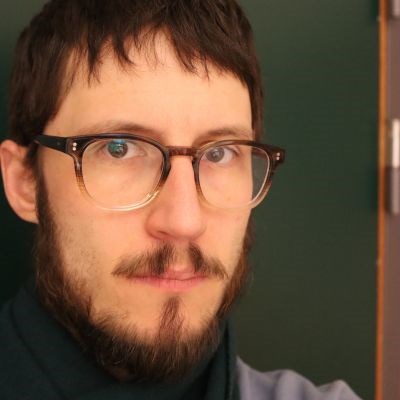Contact
Department of Landscape Architecture, Planning and Management

Dennis Andreasson started his PhD at the Department of Landscape Architecture, Planning and Management (LAPF) in October 2022. His position is quite unique since the project grew from a collaboration and co-financing between Akademiska hus, LAPF, SLU Think Tank Movium and SLU Urban Futures. After this first year of investigation, how does he view the future of Alnarp?
I always find it hard to give a short and concise answer to this question (a common problem among PhD students, I know). Usually, I say that it concerns the campus development process at the Swedish University of Agricultural Sciences’ (SLU) Campus Alnarp and that the overarching aim of my research is to formulate and suggest a Living Lab approach to explore what kind of contribution that could make to said process. Or at least to make a substantial contribution to define what such a Living Lab approach could be. Since I am a landscape architect – and employed at the Department of Landscape Architecture, Planning and Management – there is also a dimension of using my disciplinary belonging to assume a landscape perspective to the aforementioned Living Lab approach. So, to try to summarize, what my project is about is to make a contribution to a viable definition of what a Landscape-oriented Living Lab could be, and how it could benefit the campus development process at SLU Campus Alnarp.
Suggesting a novel approach to an already ongoing process, such as campus development, can be seen as critical at some level in itself. As a starting point. What is wrong with business as usual? Why is it not “good enough”? This implicit critique comes from a point of view that suggests that the university isn’t living up to its own ambitions when it comes to using the knowledge it produces, through both research and education, in ways that benefits its own development - nor society at large. The latter relates to what is usually referred to as “the third mission” of the university. While this could be seen as a relevant enough argument in itself, my project relates to how both these aspects can be connected on site; that the university isn’t using the potential of the campus when it comes to showcasing its activities, invite and open up for collaborations with actors outside of the academy and disseminate knowledge that could be crucial to holistic sustainable transformation processes. I guess a natural follow-up question would be: but why isn’t this happening already, then? I’m working on finding the answers to that one…
It depends on how you look at it. My project is co-financed by Akademiska Hus, a property company owned by the Swedish government, and SLU through the SLU Think Tank Movium and one of the university’s future platforms SLU Urban Futures. But the campus development project as a whole has three main actors: Akademiska Hus, SLU, and the municipality of Lomma. And then there is of course everyone who has an ongoing relation to/with Alnarp: the students, researchers, teachers and other employees at the university; in addition to the permanent residents of Alnarp (and visitors from the municipality of Lomma, and other municipalities in the region) and the employees who have their workplace within the area. It’s a complex mechanism. Or organism.
SLU has the potential to be a frontrunner when it comes to showing how its campuses can be used to apply the knowledge that it produces in a real-world setting. And we already have that real-world setting here, outside our windows: the campus! Almost no one reads reports or scientific articles outside of the academy, but if we can prove and show that what we research and teach actually works in practice we will have a much easier time achieving actual impact. If my project can contribute to making that (eventually) happen, I would consider it a huge success.
I hope that the campus has become even livelier, more inclusive and inviting, a natural point of reference to turn to when you want to know more about what it means and takes to be alive in the Anthropocene. As a reference library for all the disciplines that SLU is associated with and has the opportunity to become a nexus for, in terms of inter- and disciplinary research and operative processes. And as a living landscape where we use the potential of our facilities, existing and new outdoor testbeds and laboratories to show and share all the knowledge that we produce; where students, coworkers, employees and visitors feel like they are actively a part of a transformation – where change can be seen and felt. The campus is (in) a continuously ongoing process, and my hope is that this will be self-evident to anyone who visits Alnarp five years from now.